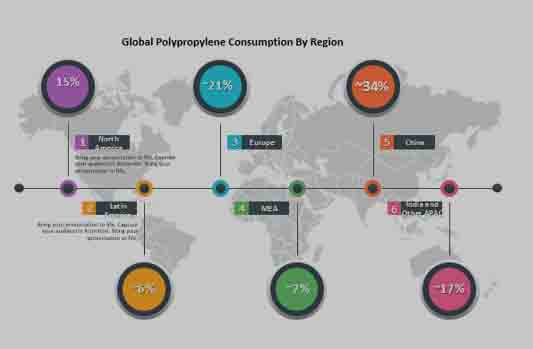Anti scratch additives for polypropylene Market Segmented By type that is Organic modified siloxane, Silicon oil, Amides.
Industry: Chemicals and Materials
Format: PPT*, PDF, EXCEL
Delivery Timelines: Contact Sales
Report Type: Ongoing
Report ID: PMRREP23440
Anti Scratch additives for polypropylene are also known as scratch resistant PP compounds or anti scratch agents. There has been an increase in use of plastics and other polymers, such as polypropylene, in the automotive industry owing to the stringent regulations that mandate weight reduction (to reduce vehicle emission) and cost savings.
Traditionally, only high valued premium cars had an additional coating for scratch resistance; however, today there is a growing need for Anti Scratch additives in small and medium sized cars. Therefore, polypropylene Anti Scratch additives are increasingly being adopted across the automotive industry.
Anti Scratch additives are mainly organically modified siloxanes and have advanced properties as compared to conventionally-used Anti Scratch coatings. Anti Scratch additives are widely used in the manufacture of dashboards and door interiors and other automotive parts such as bumper facias, instrumental panels and door trims.
There has also been an increase in the use of Anti Scratch additives for polypropylene in consumer products (furniture, toys and other day-to-day items). Electrical and electronic hardware bodies are also an important application area for Anti Scratch additives for polypropylene. Laptop and phone bodies are made from lightweight materials and with the growing demand for aesthetics and visual appeal, the overall demand for Anti Scratch additives for polypropylene is expected to grow.
The long term outlook for Anti Scratch additives for polypropylene is estimated to remain positive owing to the replacement of a number of metals and other materials with polypropylene. Polypropylene has excellent mechanical strength and durability.
The use of polypropylene parts in automotive has reduced the processing cycle time by ~30%, improved surface finish and reduced rejection rate. Anti Scratch additives for polypropylene also provide additional stability to materials and can withstand harsh environmental conditions such as high temperatures.
Stringent regulations for vehicle emissions in the automotive industry have compelled OEMs to use alternative materials, such as polypropylene, for the manufacture of a number of interior and exterior components. Polypropylene contributes more than 50% to the overall plastics in the automotive industry.
A number of manufacturers have been focusing on developing Anti Scratch additives that are long lasting and more durable than the conventionally-used silicone oils or amides. These additives do not add tackiness to the surface and are odorless and prevent fogging.
The low cost and light weight of these additives, coupled with the demand for better visual appeal and automotive body aesthetics, are driving the global anti scratch additives for polypropylene market. Moreover, Anti Scratch additives for polypropylene are compatible with a number of other materials used along with PP and thus, are a versatile range of specialty chemicals. A number of injection molded parts are being made by polypropylene.
However, other materials, such as TPO (thermoplastic olefin), are also being used for exterior parts owing to their increased mechanical strength. TPO has replaced PP (polypropylene) in a few applications, which is likely to hamper the demand for Anti Scratch additives for polypropylene in the long run.
From a regional perspective, North America and Europe are projected to hold significant shares in the global Anti Scratch additives for polypropylene market owing to stringent EU regulations and EPA regulations for vehicle emissions and strong focus on automotive weight reduction. Asia Pacific is projected to be a major area of growth for Anti Scratch additives owing to the rising automotive production in the region.
| scratch resistant additive |
|
| end use industry |
|

Some of the key players identified across the value chain of the global anti scratch additives for polypropylene market are:
Global manufacturers are engaged in the strategic expansion of their global footprints and product offerings to gain market share in the global Anti Scratch additives for polypropylene market.
PMR will follow a modelling-based approach and triangulation methodology to estimate data covered in this report. A detailed market understanding and assessment of the product type and end uses of the product segments covered in the study is followed by a demand-side analysis to estimate the sales of target product segments, which is then cross-referenced with a supply-side assessment of value generated over a pre-defined period. The statistics and data are collected at a regional level and consolidated and synthesized at a global level to estimate the overall market sizes.
Some of the key data points covered in our report include:
To know more about delivery timeline for this report Contact Sales
